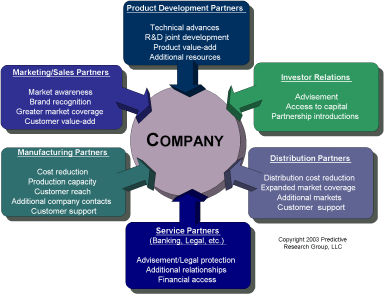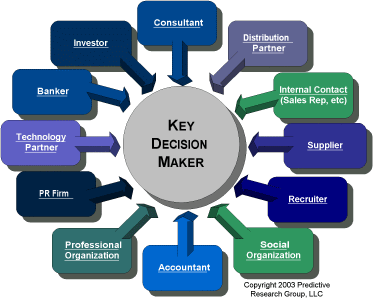← Previous Article Back to Main Next Article →
 From the Journal of Business Strategy
From the Journal of Business Strategy
Click here to view article as it was printed in Journal of Business Strategy/Handbook of Business Strategy (843KB PDF).
Grayscale Version (328KB PDF)
Competitive Analysis:
Do You REALLY Know What The Competition Is Doing?
Darrell S. Mockus
Recently, a leading technical provider in the life sciences arena was blindsided by a competitor. Naturally. the company had known this competitor existed, but regarded it as an anemic threat, at best. Although it was gaining some market share, the 97-pound weakling had limited resources and a technically inferior product. So why worry?
Unfortunately, the company had overlooked the competitor's extensive technical and business relationships. A strong relationship with a large distributor (strong enough to include a direct investment) enabled it to get deep penetration into the market. An agreement with a large European manufacturer gave it not only entree into the European market, but also access to lower cost manufacturing. Worst of all, the competitor had linked up with other technical providers and was bundling its products with theirs to create a complete solution that would rival the company's own offering. The 97-pound weakling had suddenly turned into Charles Atlas.
That this company had missed its competitor's metamorphosis is no surprise. Few companies today pay systematic attention to competitor's business relationships. That's a big mistake. Because companies no longer depend solely on their own resources to achieve corporate goals, each firm should be thought of as a combination of all of its alliances and relationships, in addition to its known assets. Therefore, understanding how a company utilizes and leverages its relationships is crucial in understanding its strategies and moves. Furthermore, awareness of the various relationships that exist in your industry gives you a deeper knowledge of how your industry works and its future direction.
Effectively managing and understanding industry and competitive corporate relationships requires that identify, map, analyze, and plan.
Identify
Your in-house competitive intelligence (Cl) department or a third-party Cl professional should be tasked with uncovering a target company's relationships (for more information about competitive intelligence, see www.scip.org and www.prg3.com). You'll find that some relationships are subtle or unannounced while others are publicly disclosed, even promoted, by the companies involved. Both have a significant impact on the company's ability to perform.
Pay close attention to how the competitor structures its products and services to make such relationships easy and fruitful. As an example, note the difference between how Microsoft and Apple approached this area. Apple created a relatively closed platform and put lots of conventions and obstacles in the way of its partners. Microsoft built the success of Windows by creating an open platform, then recruiting companies to provide solutions that worked with it. These more subtle policies are very telling of a company's relationship strategy.
The relationships uncovered also direct you to valuable sources of additional information about your target company. These sources can be especially useful to those who are analyzing privately held companies. For example, if your target company is privately held but deals with a public company in a joint product development deal, information about that joint venture will often be publicly available through the public company's Securities and Exchange Commission filings.
Map
After identifying all of a competitor's various relationships, map them in a diagram that creates an accurate picture of that target company. White-boards, pen and paper, or your favorite graphing software all work equally well to illustrate the categories and functions of a company's relationships.
Relationship mapping is performed at two levels: corporate relationships and individual/personal relationships. Each can provide valuable information about the target company. For example, strategic planning committees can use corporate relationship analysis to determine competitors' strategic direction. A sales executive can use personal relationship analysis to dissect how a competitor is leveraging personal relationships to win sales.
 Corporate relationships involve formal and informal relationships the company as a whole has with other external entities. (See Figure 1.) These relationships can reveal a great deal about corporate strategies and company capabilities. In order for each relationship to have value, information must transfer between the organizations. When this occurs, the information is often publicly available and can be collected through the direct human source interviewing of people within the partner company. For example, although your competitor might guard its product development plans, a company it is partnering with may be inclined to announce advances and triumphs, often promoting how its products fit into the competitor's offerings.
Corporate relationships involve formal and informal relationships the company as a whole has with other external entities. (See Figure 1.) These relationships can reveal a great deal about corporate strategies and company capabilities. In order for each relationship to have value, information must transfer between the organizations. When this occurs, the information is often publicly available and can be collected through the direct human source interviewing of people within the partner company. For example, although your competitor might guard its product development plans, a company it is partnering with may be inclined to announce advances and triumphs, often promoting how its products fit into the competitor's offerings.
Individual relationships are interactions that individuals within an organization have with people outside or even within their company. (See Figure 2.) Once these relationships are identified, they can yield an understanding of key decision makers' thought processes.

By knowing with whom the key individuals in a competing organization communicate and from whom they obtain their information, you can profile their decision-making processes, influence their decisions, determine future strategies, and predict reactions to your own strategic moves. Moreover, connections between individuals are often precursors to formal company relationships. For example, two key executives who belong to the same professional organization are likely to extend their relationship if their companies happen to align. Knowledge of such relationships can also reveal additional sources of competitive intelligence information on the target company and aid in piecing together how relationships on the corporate level came together.
Analyze
Now that you have a map, use it! Careful analysis can yield invaluable insights- In fact, companies practically give away their strategies through the relationships they form. Adam Lieber of Mission Ventures notes, if [company decision makers] are doing their job. their relationship choices will relate to their corporate goals." So, for example, recently formed distribution partnerships with companies that have a sizable European or Asian presence can indicate a competitors future intention to enter the overseas markets. New technical alliances can indicate a change in product direction. Connections between individual investors, advisors, and members of the board of directors can highlight future alliances, likely methods of operation, preferred business practices, and even mergers with or acquisitions by partner companies.
Your analysis should include an assessment of how a competitor benefits or is hindered by its relationships. Does the company have a powerful distribution partner that gives them additional distribution capabilities? Has it partnered with a company that has encountered financial difficulties which may slow development? Does it have a technical alliance with a company facing a patent infringement lawsuit? Is the company collaborating with others in a different market segment (which may indicate its intention to enter a new market)?
Depending on the nature of your own corporate risk or competitive situation, use the following areas to guide your relationships analysis focus:
- Technical
- Sales
- Distribution
- Manufacturing
- Marketing
- Financial
- Legal
Plan
Feed the relationship intelligence gathered into your own strategic decision-making. Whether you are benchmarking successful competitor tactics or looking to exploit their weaknesses, an understanding of your competitors' various relationships gives you an edge. It allows you to understand and map industry and competitor movements.
Strategic planning that ignores intelligence gathered through relationship analysis leaves your company exposed to unseen competitive threats and company-ending risks. For example, not knowing that your primary competitor is acquiring one of your main suppliers can be devastating if your company is unprepared. "Understanding partner relationships is crucial in order to form effective contingency plans," warns Joe Lin of Lombard Investments.
The good news for those trying to monitor a competitor's relationships is that the more beneficial a relationship might be, the longer it will have taken to form and the more chances there will be to detect it. Alliances do not form overnight. They are a result of time-consuming and difficult negotiations. Relationships such as joint product development efforts, licensing agreements. and joint ventures often develop over years before a product is successfully brought to market. During that time, many signals will indicate an impending relationship. In addition, the more relationships a competitor has, the more information about its strategies will "naturally" be leaked. You can capture this information and use it to forecast the competitor's likely moves.
If you are to capture it, however, someone in your organization must be responsible for monitoring these relationships. That person or department must have the experience, resources, and training to carry out this important task effectively. And they must begin immediately-effective competitors may begin to mask certain strategic developments, so if you do not begin gathering intelligence early, you may learn too little too late.
Relationship analysis effectively drives more intelligence into strategic decision making, which will give your company a competitive edge. Understanding how your competitors relate to and work with other organizations provides a more accurate picture of your competitive landscape. When you take into account the sum of these relationships, you can assess a competitors' full range of strengths, weaknesses, and competitive positioning. Without this picture of your competitive landscape, you are leaving yourself vulnerable to competitive forces and oblivious to lost opportunities. What you don't see is what often hurts you the most.
Copyright 2003 Journal of Business Strategy/Handbook of Business Strategy



